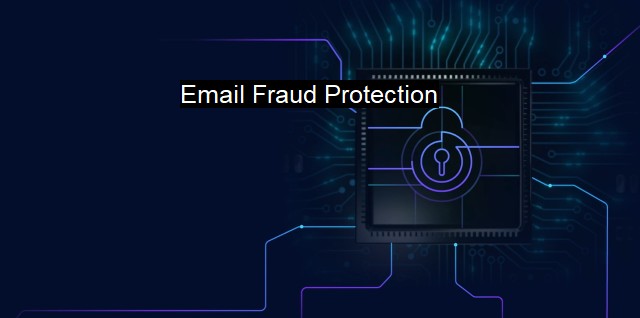What is Email Fraud Protection?
Secure Your Email: Understanding and Implementing Email Fraud Protection for Cybersecurity in the Digital Age
Email fraud protection is a crucial aspect of cybersecurity and antivirus protections that majorly targets the various forms of email fraud like phishing, spear phishing, and whaling scenarios. With the advent of technology, the world has seen massive changes in every aspect, including communication. Email has become an integral part of this communication process, with various individuals and organizations leveraging this platform to share valuable information.The more technology expands, the more it also presents opportunities for cybercrimes. Among these cyber wrongdoings, email fraud is one of the most common. The essence of email fraud protection, therefore, is to safeguard these digital channels fromantagonistic exploitation. It uses advanced methods to detect fraud and safeguard email users from the practice.
To grasp the concept of email fraud protection, it is essential first to understand what email fraud entails. Email fraud refers to when a user receives deceptive scam emails that seem to come from legitimate sources but are from scammers. These emails aim to deceive people into revealing crucial personal or financial information, such as passwords, credit card numbers, or even sending money.
In the broader cybersecurity context, email fraud is termed as phishing, whereby an attacker under the disguise of a legitimate entity induces the recipient to click links leading to malevolent sites or to share sensitive data. Other advanced forms of phishing include spear phishing targeting specific individuals and whaling targeting top-level executives.
The protection against these types of email fraud fully involves the integration of modern cybersecurity and antivirus utilities. Email fraud protection employs several strategies both at the individual and organizational level. The two primary tactics are email authentication and content filtering.
Email authentication involves implementing technology that confirms an email was indeed sent from where it claims to have originated. It wards off spoofing attempts where hackers send emails pretending to come from trustworthy institutions. This deceptive tactic is common in phishing attacks, where attackers perpetrate trust to convince recipients to divulge information or perform specific actions.
On the other hand, content filtering scrutinizes the contents of an email to uncover any malicious intent. This approach uses spam filters, which identifies spam before it gets to the user’s inbox, allowing the user to avoid potential threats. Phishing filters, in contrast, engage machine learning algorithms to study the styles, routines, and behaviors in emails, enabling them to detect phishing mails.
The usage of antivirus software adds another layer of protection in guarding against email fraud. Antivirus utilities can conduct an immediate examination of all incoming and outgoing emails and their attachments for any malicious code. Emails carrying malware are thus isolated and incarcerated before they can create any harm.
Even with the most advanced email fraud protection techniques and applications, it is also crucial for individuals and organizations to take up measures proactively. By equipping themselves with knowledge to identify phishing tactics and utilizing a cautious approach to transmitting information through emails, they minimize the chances of falling prey to such malicious attempts. Always re-check the source of an email, be wary of unexpected emails asking for sensitive information, and steer clear of clicking dubious links.
Conclusively, email fraud protection is an indispensable facet of modern cybersecurity. It presents an essential defensive barrier against prevalent cyber threats and fraud attempts via email. It is a comprehensive system entailing the amalgamation of technology and wisdom. While the need for tech-based defenses is irrefutable, also central in this war against cybercrime is a system of education and awareness. Thus, cybersecurity is a collaborative endeavor – one that necessitates effort from both mainstream technology and conscious end-users.

Email Fraud Protection FAQs
What is email fraud protection?
Email fraud protection is a security measure that safeguards against fraudulent email activities such as phishing, spoofing, and spamming. It aims to protect users from cyber threats and ensure the safety of their personal and sensitive information.How does email fraud protection work?
Email fraud protection works by implementing various security mechanisms such as spam filters, antivirus software, and authentication protocols. These measures prevent unauthorized access to a user's email account and block suspicious emails that may contain malicious links or attachments.What are the benefits of email fraud protection?
The benefits of email fraud protection are numerous. It helps to prevent identity theft, financial fraud, and other cybercrimes that can harm individuals and organizations. It also ensures the confidentiality and integrity of sensitive information and promotes a safe online environment.Do I need email fraud protection even if I have antivirus software?
Yes, antivirus software is not enough to protect against email fraud. Email fraud protection provides an additional layer of security that specifically targets email-related threats such as phishing and spamming. It complements antivirus software and helps to ensure comprehensive protection against cyber threats.| | A | | | B | | | C | | | D | | | E | | | F | | | G | | | H | | | I | | | J | | | K | | | L | | | M | |
| | N | | | O | | | P | | | Q | | | R | | | S | | | T | | | U | | | V | | | W | | | X | | | Y | | | Z | |
| | 1 | | | 2 | | | 3 | | | 4 | | | 7 | | | 8 | | |||||||